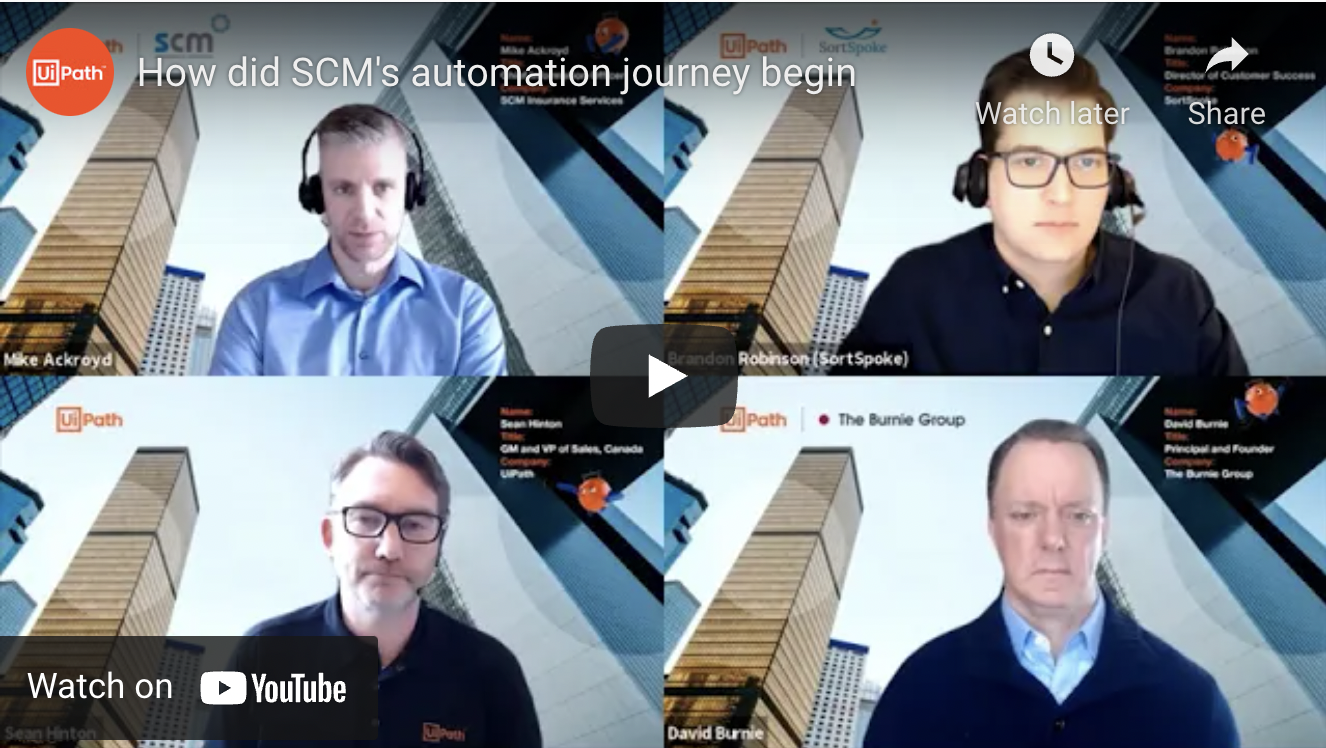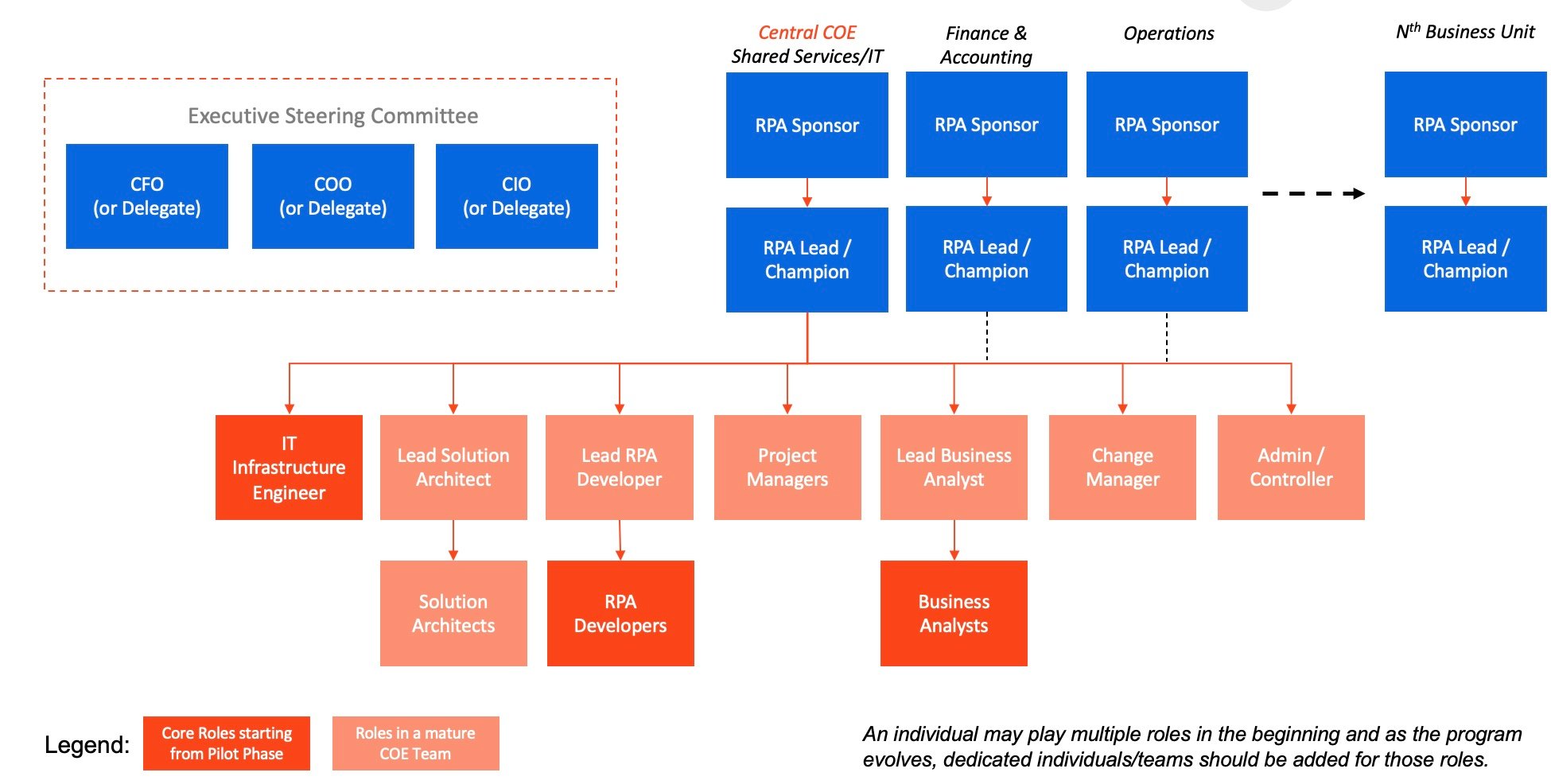What Is an Automation Center of Excellence?

If you’re exploring the benefits of automation for your organization, you may have heard the term “CoE” or center of excellence.
An automation center of excellence (CoE) is an internal team that streamlines automation output, provides structure, and helps you scale automation through the enterprise. Having a team of automation experts can help you save time and money in developing your strategy, ensuring that you get the most out of your automation program.
In this blog we explore what a CoE is for and how it improves the level of automation quality by answering the five Ws of a CoE: what, why, when, where, and who.
WHAT is an automation CoE?
An automation CoE is an internal, self-sustaining, and scalable team of experts that runs and maintains software robots. It enables an organization to scale robotic process automation (RPA) at the enterprise level through the establishment of organization-wide RPA standards processes and procedures, sharing best practices, driving common technology adoption, and creating a robust governance model.

WHY is having an automation CoE beneficial?
There are many benefits to having in-house automation expertise, but here are a few we’ve heard from CoE leaders and team members:
An automation implementation is more likely to provide the best value and return when it is tailored specifically to an organization’s needs, rather than being a 'one-size-fits-all' solution. Having a dedicated team of experts is the best way to ensure your organization is using automation in the most effective manner.
An automation CoE takes input from stakeholders and departments, ranking tasks by their volume and time consumed. They can then identify and prioritize costly tasks that are performed frequently as they offer the largest ROI once automated.
If the goal is to implement automation across the entire organization, an automation CoE is essential for the successful adoption and evangelism of RPA. By providing a centralized location for knowledge sharing, solutions for common problems, and work aids to help you get started, it establishes trust in the technology and provides the knowledge base necessary to support the use of RPA across the business.
As automation technology evolves rapidly, the internal automation CoE will stay on top of new trends and capabilities, ensuring that your organization is aware of new features and enhancements as soon as they become available.
WHEN should organizations build an automation CoE?
Both organizations who are just beginning their automation journey and organizations who have already started to reap the benefits of automation can build an automation CoE to scale up their initiatives and maximize the benefits of automation.
People’s United Bank started their first RPA pilot with their loss prevention group, and extended RPA to use bots as part of their mergers and acquisitions (M&A) strategy. When COVID-19 hit and the United States CARES Act was passed, they decided to utilize more UiPath bots to streamline some of the U.S. Small Business Association (SBA) Paycheck Protection Program (PPP) loan processes. They automated processes such as loan document printing and helped operations through the unprecedented volume of loans that came from the program. People’s United Bank is now democratizing RPA with business developers across the enterprise. The CoE supports and governs these automation makers and consumers.
WHERE should you start?
The first step to build an automation CoE is to assemble your key personnel. Each should have a clearly defined role and responsibility and be charged with implementing and utilizing automation to its full extent for the enterprise.
SCM Insurance Services, the largest provider of insurance claims in Canada, reduced the time it takes to process customer forms by automating manual data entry with RPA. As soon as they recognized the benefits RPA offered, they were eager to bring more RPA into their business. They started socializing the concept of automation early in the process, gathering a cross-functional group of stakeholders, including operations, IT, and executives, to develop a comprehensive automation strategy. They spent eight to 12 months researching and developing an end-to-end automation strategy that targeted the biggest opportunities.
Here's how their journey began:

WHO is on the team?
Your automation CoE should consist of both technical and business roles. Below is a sample CoE team structure, but remember not all these roles are required to start with a CoE. Multiple roles can be divided within the same group to achieve efficiency.

This blog post describes how to find RPA champions for your CoE.
To learn more about best practices for starting and scaling an automation CoE, join our Center of Excellence Summit webinar series starting September 7, 2021.
Topics:
Center of Excellence (CoE)
Product Marketing Manager, UiPath
Get articles from automation experts in your inbox
SubscribeGet articles from automation experts in your inbox
Sign up today and we'll email you the newest articles every week.
Thank you for subscribing!
Thank you for subscribing! Each week, we'll send the best automation blog posts straight to your inbox.



